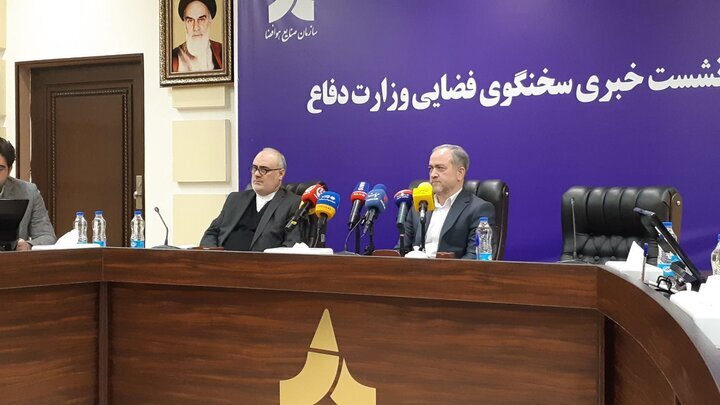Iran to continue developing indigenous aerospace technologies

TEHRAN – The spokesman for the Ministry of Defense's Aerospace sector has underscored the significance of the developments in this field, emphasizing that Iran's progress in aerospace is entirely self-reliant, free from dependence on other nations.
Speaking at a press conference on Tuesday, Ahmad Hosseini-Muness stressed that the aerospace industry is a driving force in the nation's industrial landscape and a crucial component of its technological future. He cautioned that neglecting current opportunities might impede future advancements.
Addressing queries about Western reactions to Iran's satellite launches, Hosseini-Muness asserted that the objectives for Iran's space technology are purely scientific and technological.
The spokesman indicated that the country's space program follows top-level directives with upcoming satellite launches, including advanced versions of the Simorgh satellite. He reassured that Iran's space progress is entirely indigenous, without reliance on other nations.
Hosseini-Muness emphasized the priority of leveraging internal capabilities but clarified that it doesn't preclude cooperation with other countries, citing the successful launch of the Khayyam satellite in collaboration with Russia last year.
Expressing hope for positive outcomes in negotiations with several countries, the spokesman envisioned Iran providing launch services to other Islamic and neighboring nations.
Acknowledging collaboration with various universities in producing cryogenic engines for future satellite launches, he unveiled plans for the upcoming Sarir satellite, capable of carrying one and a half tons of weight, and the Soroush satellite with a six-ton capacity in the future.
The spokesman highlighted cooperation with the Ministry of Communications and Information Technology for IoT projects, expressing commitment to advancing Iran's position in space exploration through various ongoing initiatives.
Iran has successfully launched three satellites for the first time using its carrier rocket developed by the Ministry of Defence and Armed Forces Logistics.
The satellites were sent to a minimum orbit of 450km (280 miles) on Sunday. One satellite weighing 32kg (71 pounds) and two nano-satellites of less than 10kg each were propelled using the Simorgh (Phoenix) satellite carrier rocket. The Simorgh satellite carrier, with two stages of liquid fuel, was built by the Iranian Ministry of Defense.
The nano-satellites, named Kayhan-2 and Hatef-1, aimed to test narrowband communication and geopositioning technology.
The larger satellite, named Mahda and built by the Iranian Space Agency, meant to test the accuracy of the Simorgh rocket in delivering multiple cargoes to space.
This successful launch was the 11th in the Raisi administration and a testament to Iran's growing capabilities in space technology.
Leave a Comment